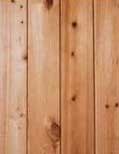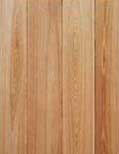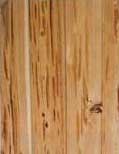- Q: Why should I use cypress?
-
Because it's a beautiful, straight grained, light colored wood with a
wonderful fragrance that is very durable. With its legendary hardiness
and durability, cypress also works well outside the home, including siding,
trim, decks, fences, shutters, window boxes and landscape design elements.
When milled, cypress typically displays a predominantly yellow tone, with reddish,
chocolate or olive hues. Noted for its color consistency, density, and relative
lack of knots, cypress is superbly workable, easily machined and installed, and
readily finished.
top
- Q: Where does cypress come from?
-
In the United States, most cypress trees are natives of the South. They are found
primarily in wet, swampy areas along the Atlantic Coastal Plain from Delaware to
Florida, and west along the Gulf of Mexico to the border of Texas and Mexico.
Cypress also thrives along the Mississippi Valley from the Louisiana delta to
southern Indiana. While cypress has always been THE architectural choice in the
South and East, many builders and trade professionals throughout the U.S. are using
cypress in what had traditionally been cedar, redwood and treated pine applications.
top
- Q: How much cypress is grown United States?
-
Annual cypress production is about 100-120 million board feet (6000-7000 truckloads).
It is generally believed that cypress trees are growing at a faster rate than they're
being harvested. For more information on Cypress as an American, Sustainable, and Carbon Neutral wood,
click here.
top
- Q: What cypress grades does Jimmy's Cypress sell?
-
We sell Common #2 grade, which is very suitable for most every building project.
We do have a Select grade and Pecky Common grade available for certain products.
Our cypress is selected by certified lumber graders according to National Hardwood
Lumber Association (NHLA) rules. These rules are outlined in the "Rules for the
Measurement and Inspection of Hardwood & cypress" available from the NHLA.

common #2 grade

select grade

pecky
top
- Q: What lengths are Jimmy's Cypress boards?
-
Our cypress is sold in random lengths from 6' to 16' unless specified otherwise.
Generally, 12'-14'-16' lengths are the most common. Rough Sawn 4x4 to 12x12 timbers
(which are custom cut for your job) are available up to 16' long.
top
- Q: What does rough sawn and smooth planed mean?
-
Rough sawn wood has a rough saw texture and APPROXIMATE, ROUGH DIMENSIONS. It could have
stick marks left during the drying process, weathering (grey or charcoal colored), and small
metal banding marks where it was bundled together.
Smooth planed wood has been run through a wood planer which gives it a smooth finish,
similar to a 2x4 you'd find at the lumberyard. It's milled to exact dimensions and planed
on all four sides unless specified otherwise.
top
- Q: Is cypress a softwood or a hardwood?
-
Cypress is a softwood, but it is graded under a special section of the
National Hardwood Lumber Association's rules. Although it has needlelike
leaves typical of softwoods, cypress loses its needles during the autumn and
winter, hence the "bald cypress" name is commonly used.
top
- Q: How dry is your cypress?
-
We dry our cypress to a moisture content of approximately 15%. Timbers and items
custom sawn (from logs) for your job will be freshly sawn, wet wood with a moisture
content of up to 50%.
top
- Q: Is cypress a good interior flooring material?
-
Yes, cypress flooring is a good choice, but it is a relatively soft wood and will take
on an "aged" look when used in high traffic areas. To give it a harder finish, you might
consider sealing it with Waterlox's "Oil Modified Urethane" or similar product.
top
- Q: Is cypress easy to work with?
-
Yes! Cypress works well with both hand and power tools. The wood planes
easily and resists warping. Although cypress is resinous, the resin (called cypressene)
isn't a sticky sap like other woods. It glues well, sands easily and readily accepts finishes.
top
- Q: How should I finish my cypress?
-
For interior walls and ceilings, two coats of a polyurethane varnish should be sufficient.
The first coat will raise the grain a little bit, so you might lightly sand before applying
the second coat. You can also paint your interior cypress if desired, using standard painting
procedures.
For exteriors you can let it weather naturally, but it will perform better if sealed with
either a clear stain, colored stain, or paint. If using stains, use an oil based wood
stain with a mildew inhibitor. Clear stains last 1-3 years, semi-transparent colored stains
(wood grain still visible) last 3-5 years, and solid colored stains last 5-10 years, and
paints last 10-20 years.
If it's going to be used indoors, you should use varnish (polyurethane). The first coat
raises the grain. After a light sanding, apply a light second coat for a very smooth finish.
Varnishes are available in glossy to non-glossy finishes and can be darkened a bit to your tastes.
top
- Q: How many different types of cypress do we have in the U.S.?
-
There is one species of cypress grown in the United States, scientific name
Taxodium Distichtim. Bald cypress is the most common name, but it's also known by
many other different marketing names like gulf cypress, red cypress, tidewater
red cypress, white cypress, yellow cypress. It's called bald cypress because it
loses its needles in the Fall.
top
- Q: Is cypress durable?
-
Cypress has a natural preservative oil known as cypressene which gives
the heartwood resistance to insects and decay. With a suitable surface
treatment, cypress generally has a superior durability, holding paint
well and resisting weather.
top
- Q: How does cypress compare with pine and cedar?
-
Cypress grows slowly, so the rings are much closer than in most wood species. These close
rings tend to make cypress more energy efficient, and decreased shrinkage makes it more
durable and stable. In its natural state, the wood is a pale honey color and unsealed,
weathers to an even gray on the surface (natural color can easily be restored if desired.)
Pine grows quickly, which results in wider growth rings, and a more porous surface. This means
treatment is required to prevent rot and insect attack. This porous wood stains through the face
and with treatment becomes somewhat darker. Untreated material will stain deep toward the core
leaving permanent marks and becoming subject to mold and rot. For this reason, natural weathering
is not recommended. Wet pine is well known to move (shrink and warp or cup) substantially as it dries.
Cedar is a darker wood with heavy odor (check for allergic sensitivity). A lightweight and porous wood,
it weathers and absorbs treatment resulting in darker tones. Knots tend to be loosened after time and
much more frequent than in cypress.
top
- Q: What is the difference between Board Feet, Square Feet, and Linear Feet?
-
Board Feet is a measurement of volume: it is a term used within the lumber industry
equal to a piece of wood 12”x12”x1” thick, or 144 cubic inches. Our products are
offered in linear feet.
Square Feet is a measurement of area: it’s like the floor area of your home, simply
width x length, for example 40’ wide x 30’ long = 1200 square feet.
Linear Feet is a measurement of length: it only measures how long something is,
not its width or thickness. So, a piece of wood 1"x6"x16’ and a piece of wood 4”x8”x16’
are both 16 linear feet of wood. Also, if you are 5’-6” tall, that means you are
5’-6” linear feet long.
top
- Q: How do I find out how many Linear Feet I need to cover a certain area?
-
First, determine how much square footage (area) you have to cover. If it is a wall
10’ high and 50’ long, that’s 10’x50’=500 Square Feet.
Next, pick the cypress product that you want to use. Determine the coverage for that product.
The coverage (in inches) is shown on each of our product pages. Then, divide 12 by that number, and
that new number is what we call a Conversion Factor. That Conversion Factor is how
many linear feet you will need of that product to cover one square foot of area. Then
multiply your Square Footage by that Conversion Factor, and voila!, you now know
exactly how much of that cypress product you will need to cover that area. We suggest
you add 5%-10% extra to be safe.
Example: Cover a floor with cypress 6" Select Bevel Siding, item #60scy:
-
Area to cover: floor of 13’x18.5’=240.5 square feet.
-
Item chosen to cover floor: Select Reclaimed Longleaf Pine Flooring 1x6 (coverage
of 4-3/4”)
-
12 divided by 4-3/4” = 2.53, which is the Conversion Factor
-
Multiply 240.5 square feet x 2.53 Conversion Factor = 608 Linear Feet.
-
Add 5%-10% extra.
top
- Q: Why should I be very careful about buying cypress mulch?
-
The cypress mulch industry is really growing. There is so much demand for this product
that some cypress lumber mills are buying very small (3" diameter at chest height) cypress
trees and shredding the WHOLE TREE into mulch. This is a short sighted source of income for
them as these young trees are way too small for building material use and hurt the sustainability
of our industry.
Normally, cypress trees are stripped of their bark prior to sawing into lumber. The bark is a
BY-PRODUCT of the cypress lumber sawmilling operation and is often sold as mulch. Certainly this
is acceptable.
How can you tell the difference? The bark of cypress is flimsy and darker than the wood, which is
blondish. The best way to be sure you're buying a good product is to visit the place where the mulch
is produced and see for yourself what it's made from. We don't sell mulch.
top